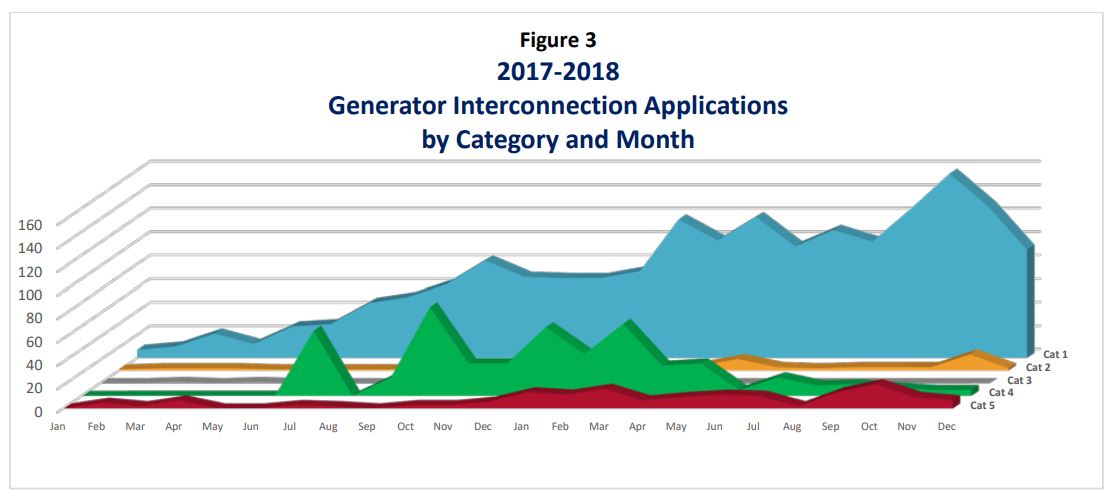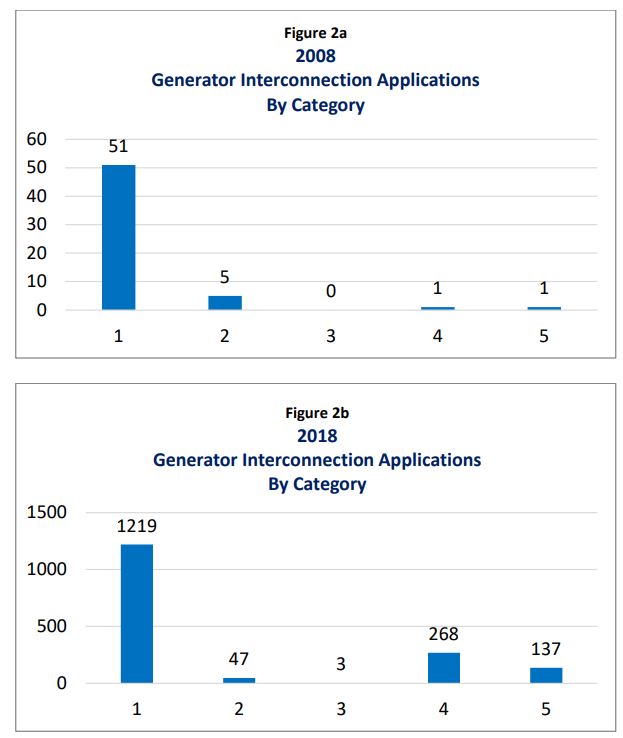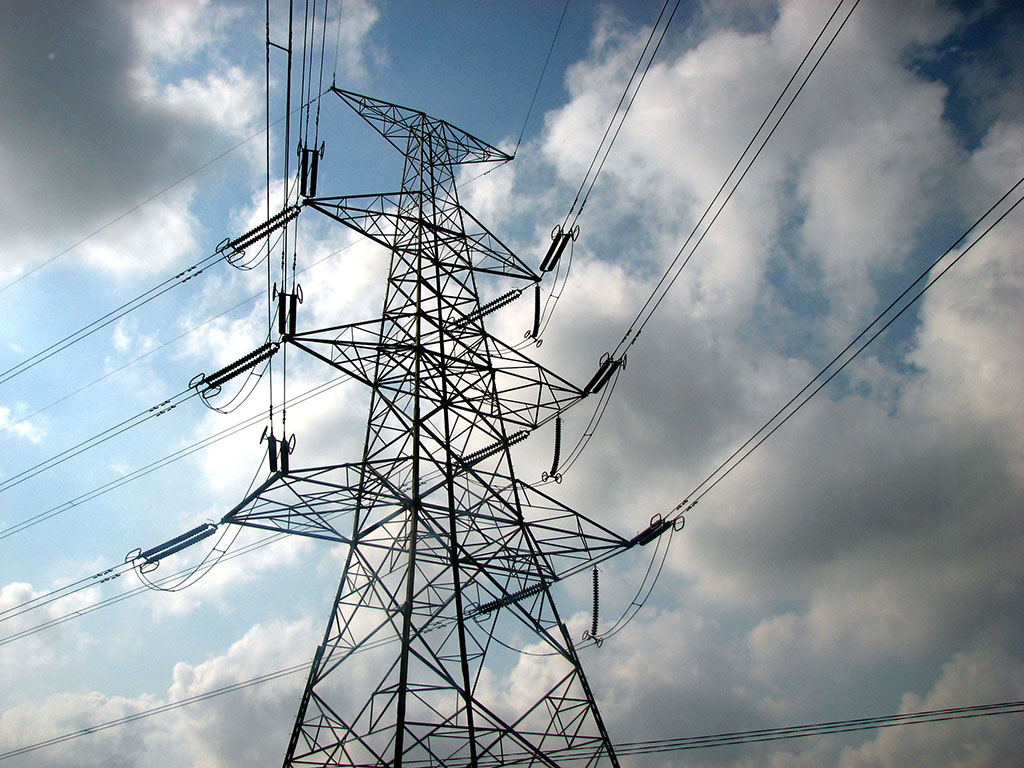The exponential growth in popularity of solar power appears to have caught one U.S. utility by surprise, as spotted by an employee of British multinational energy company Centrica.
Peter Cavan on Friday tweeted about the struggles being experienced by Michigan electric utility Consumers Energy, which has applied to the state’s Public Utility Commission for a “partial waiver of the electric interconnection and net metering standards” after being swamped with interconnection requests. The filing (Case No. U-20444) noted, between 2008 and 2015 the number of interconnection applications received grew from 58 to 259.
In the past two years, continues the filing: “The total number of annual interconnection applications submitted to Consumers Energy has increased exponentially. All told, the company received 2,435 interconnection applications in 2017 and 2018 … That is more than three applications per day, every single day, over a two-year period … The increase in interconnection applications that began in 2017 was too substantial, and too sudden, to allow the company to respond with an immediate corresponding increase in resources and staffing.”

The embattled utility said: “First, the scale of the problem was not truly known to the company until 2018 … Nor could the increase in applications experienced in 2017 and 2018 have been predicted by the company in earlier years.”
Had the number of applications followed a linear growth trends from 2008 to 2016, 230 and 252 applications would have been expected in 2017 and last year, respectively, noted the company. And had that trend continued, Consumers Energy would not have had to field the actual number it received last year until after 2097 – which presumably would have given it time to make plans with HR.
The document noted, not only has there been a sharp increase in demand for interconnection, but demand has shifted in two years to larger, more complex projects – see image below. The utility said, of more than 100 generating facilities larger than 1 MW currently interconnected with its distribution system, only three are solar. Yet, as of the day of the report, more than 540 outstanding interconnection applications for facilities larger than 1 MWac involved solar projects. Specifically, larger projects were singled out as being a heavy strain on resources as they took longer to analyze.
While larger projects received the most attention, all system size categories have increased since 2008 – with residential increasing 2,300%, added the utility – Consumers Energy clearly has not been reading pv magazine for the past decade.

The report also noted challenges for developers, with some queued applications not having followed through on documents regarding their applications, fees paid and other issues. In the case of one developer that had submitted more than 150 interconnection applications, they were submitted with one-line engineering diagrams “sealed” by a professional engineer whose license had expired at the time the application was received.
The utility said: “Interconnection standards prescribe time periods in which the company must review and process interconnection applications.” Under state law, the company must review all applications and determine whether to complete them within 10 working days. Then, depending on project size, engineering reviews and distribution system studies must be completed in defined timeframes. For instance, a category 4 system of “greater than 550 kWac and not more than 2 MWac” must have its engineering review completed within 25 working days, and the distribution system study completed within 45.
Just don’t mention the potential of wind-solar-storage projects.
This content is protected by copyright and may not be reused. If you want to cooperate with us and would like to reuse some of our content, please contact: editors@pv-magazine.com.



By submitting this form you agree to pv magazine using your data for the purposes of publishing your comment.
Your personal data will only be disclosed or otherwise transmitted to third parties for the purposes of spam filtering or if this is necessary for technical maintenance of the website. Any other transfer to third parties will not take place unless this is justified on the basis of applicable data protection regulations or if pv magazine is legally obliged to do so.
You may revoke this consent at any time with effect for the future, in which case your personal data will be deleted immediately. Otherwise, your data will be deleted if pv magazine has processed your request or the purpose of data storage is fulfilled.
Further information on data privacy can be found in our Data Protection Policy.